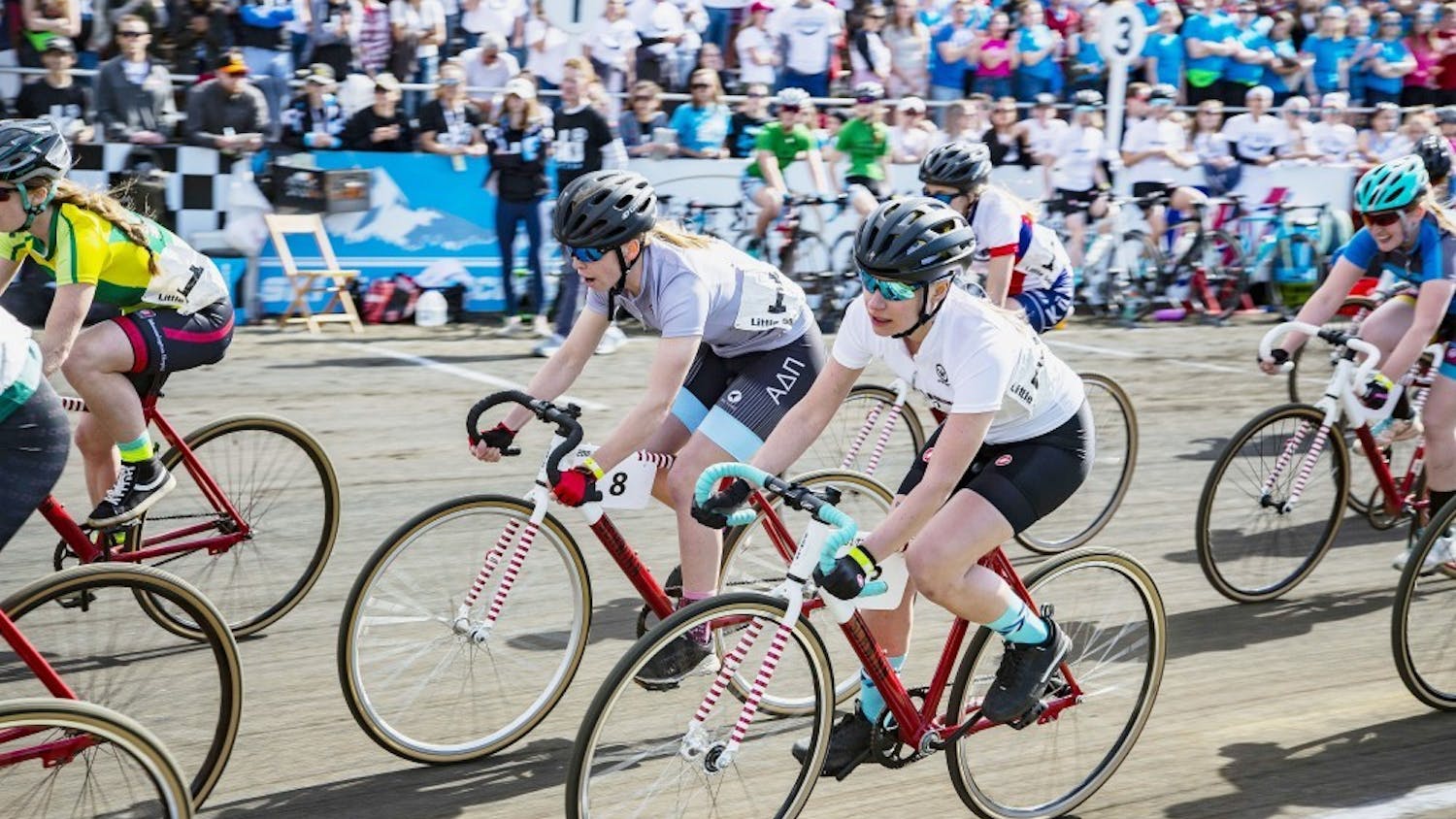Emotions flicker across Tanya Saxena’s face in the blink of an eye when she’s dancing. In one second, her face is rapturous. The next, mournful. But if there’s one emotion she wants to show her audience, it’s happiness.
“Personally, I hope they see the joy I feel when I dance,” she said.
Saxena, 25, is a full-time dancer and dance instructor from Delhi, India, who dances in the Bharatanatyam tradition, the oldest form of classical Indian dance. She performed at the Global and International Studies Building Oct. 10 as part of her tour across the United States to perform Bharatanatyam dance.
The performance, which brought in undergraduates, families and children and faculty alike, was put on by the Dhar India Studies Program. Michael Dodson, the director of DISP, said the dance recital was organized to promote awareness and understanding of Indian culture.
“It’s a really great way to appeal to people who potentially have a passing interest in India," he said. "There’s something here to show the depth to Indian culture."
Saxena also sees dance as evocative of India's diversity.
"It's very rich in diversity, and its diversity is reflected in the classical dances," she said.
The dance form, which is 2,000 years old, started in a region of southern India called Tamil Nadu. Originally, it wasn’t a form of entertainment. Young girls, 13 or 14 years old, would perform it as a form of devotion to Hindu gods.
Saxena started dancing in tap and jazz styles, but switched to Bharatanatyam dance when she was 11. Something struck a chord.
“I took to it,” she said. “My body took to it. I found it easier to do, easier to relate to.”
But she didn’t realize she wanted to dance full time until college, thinking it was just a hobby, she said.
“I felt like if I didn’t give this dance my full time, I wouldn’t grow in the way I wanted to,” she said. “It’s been a long, long journey.”
Saxena takes two hours or so to put on makeup and get dressed for performances. She performs in a fitted sari, with flowers plaited into her hair. On her feet, she wears anklets with tiny bells on them, called ghungroos, that jingle lightly as she pads across the floor. When she strikes the floor with her feet though, the bells add another percussive dimension to the music she performs to.
Getting into her outfit and makeup is a process that could be cumbersome if it didn’t help her get into the headspace for her performance, she said.
“In that entire two hours, if you focus and sort of go through the motions, it changes your mindspace," she said. "You start feeling more and more like a performer as it’s going on."
At 25, she’s young for someone dancing in the Bharatanatyam style. Most Bharatanatyam dancers reach their peak in their 40s, Saxena said, after a life of experience and soul-searching to inform their dance technique.
The dance style is heavily narrative, drawing on stories and concepts from the Hindu philosophy. But despite the ancient nature of the style, Saxena thinks it’s still relevant.
“I feel like these stories are reinterpreted because the dance has changed and evolved so much from the temple tradition to the proscenium stage,” she said. “I feel like even though we tell these stories we tell them in a manner that is relevant to today’s time.”
In her performances, Saxena has several tools to tell stories. There are her hands, which she calls the alphabet of the dance language. Different hand positions convey different messages. She accompanies her hand gestures with a wide range of facial expressions and expressive postures.
The methods of her storytelling are flexible, but the story itself remains consistent.
“The usage isn’t fixed,” she said. “It is more the idea that’s fixed, and what you’re trying to say through the piece is fixed.”
Since the 1930s, Bharatanatyam dancing has undergone a revival in India. Saxena hopes that her style of dance will translate to American audiences.
“What I hope the audience takes away is a sense of what the dance is about, about the possibilities of the dance and what we try to do in the dance form,” she said. “I want to connect with the audience."




